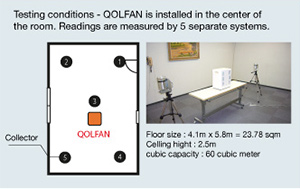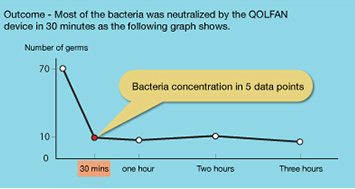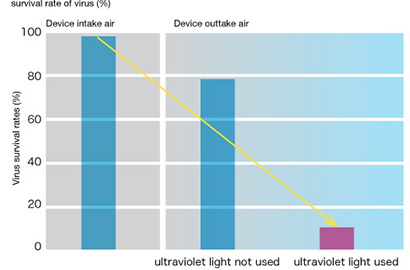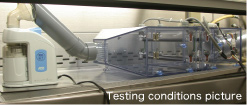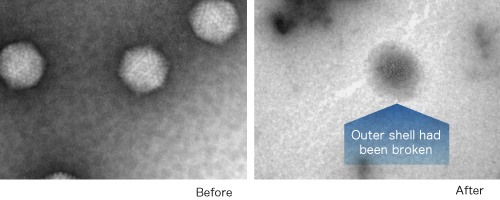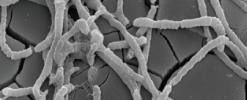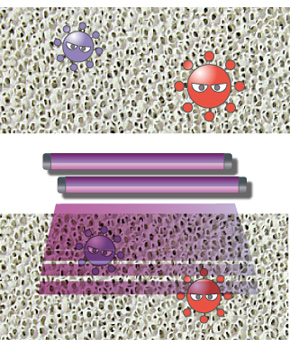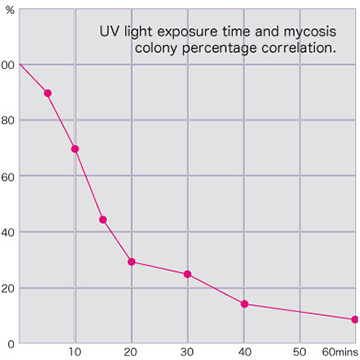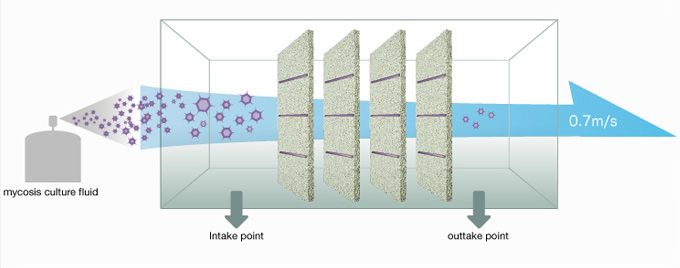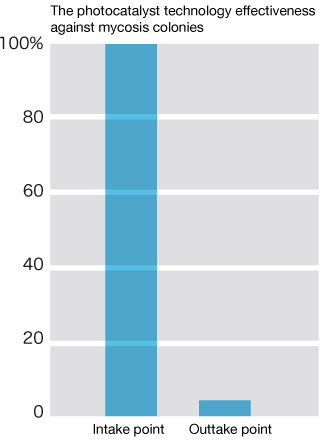Photocatalyst test data and results
Test 1 – Wind-tunnel airborne bacteria elimination
The following illustration shows the level of efficiency of QOLFAN devices in eliminating airborne bacteria. The measurements are based on analysis of “intake air” and “outtake air” readings.
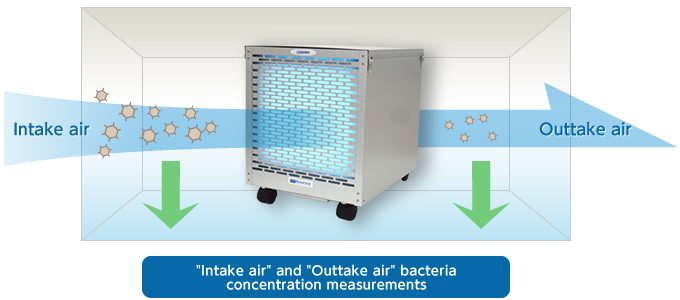
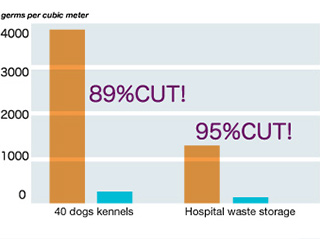
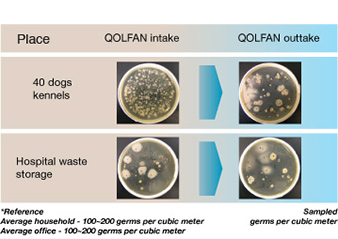
Outcome
Household or office environment contains undeniably less airborne bacteria compared to the malodorous premises of breeding kennels, waste storages and the like – obvious subjects to high bacteria concentration. The comparison results suggest that the QULFAN devices succeed in eliminating guaranteed 80% of airborne bacteria in these environments and effectively deodorizing the air.


